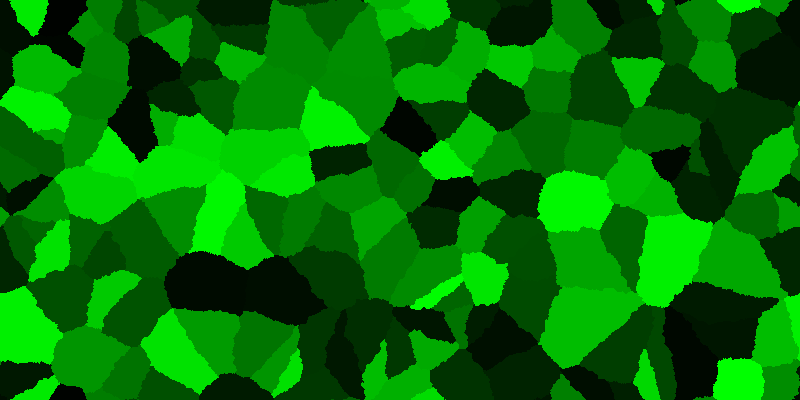“Camouflage”, a cellular automaton
Today I present a particularly simple N-state cellular automaton. It is defined by the following rule: if a cell has two (or more) Moore neighbours with the same value as the cell itself, then the value of the cell is increased by one (mod N); otherwise, it is left unchanged. In this case, it is easy to see what kind of pattern is created simply by thinking about the rule. To confirm, here is a computer simulation showing a still image from the final stage (N = 96):

It is also easy to figure out what happens if N is changed; I leave this as an exercise to the reader.
